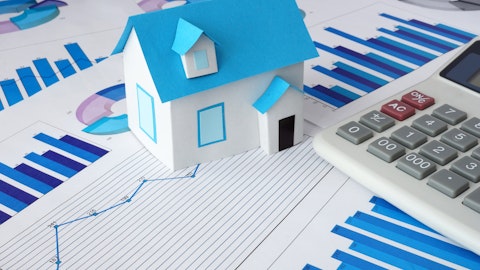Juan Sanabria: Hello. Good morning. Just hoping you could spend a little time talking about the Resident 360 program and what that may be doing in the operating cost expense guidance as well as implications for G&A? And how we should think about return on those investments going forward?
David Singelyn: Good morning Juan, it’s Dave. Let me go through and really kind of frame what the Resident 360 program is, and then Chris might pick it up and go through a little bit of the numbers. Specifically, the Resident 360 program is an enhancement of our current platform. It’s an enhancement of that platform around resident communications and further improvements and enhancements in our maintenance delivery program. Today, we’re proud of our leadership in customer service and maintenance programs, that’s evidenced by third-party surveys that you see in some that we have commissioned. And those that we’ve commissioned also give us commentary as to what residents are looking for as improvements from residential, institutional landlords, whether they be single-family, whether they be American homes, whether they be multifamily.
And that’s really around those two elements, communications as well as maintenance delivery. So, we listen to our residents and being a leader doesn’t mean that we can’t improve. So, that’s the initiative. How does it benefit us? Well, like other investments that we have made and that others make, there’s a little bit of an investment time period and then a benefit time period. That benefit time period will come — what we will see, and we know this because we did pilot this program over 2022 is that we’ll see improvements in customer satisfaction and where we have tested, it has led to better retention. That leads to better turnover or reduce turnover cost. And we also have seen better execution in the maintenance platform, better execution, allowing us to do more internal work, that’s — improves the quality of the work, but it also keeps the cost down.
So, there’s going to be a little bit of an investment in 2023. Those benefits will start seeing towards the end of the year, but probably more importantly, in 2024. Talking about the components of expenses, I’ll turn it over to Chris.
Christopher Lau: Yes, Juan, the primary place you’re going to see the investment this year will be in the property management line. For reference, what’s contemplated in guidance is about a 12% increase this year on property management and it reflects a couple of different considerations. One, of course, just a general inflationary environment. Two, we did have some modest understaffing in the first quarter of last year that will compare somewhat a little bit unfavorably on a year-over-year basis into this year. And then the balance of this year will be represented by the investments into our Resident 360 program.
Juan Sanabria: Great. And then if I could just switch gears to bad debt. It increased sequentially. You kind of called it out at the top. Just curious if there’s any particular parts of the country or regions or the type of customer that you’re seeing cause that? And when do you think we’ll get past that kind of COVID noise, if you will?
Christopher Lau: Yes. Juan, Chris here again. Good question. Let me start, I’ll frame things a little bit, and then Bryan can probably share some more thoughts as well. Generally speaking, we would characterize collections as continuing to hold strong. Full year 2022 bad debt landed in the low 1% area, which was very consistent with our expectations that were contemplated in guidance. The one aspect that has played out slightly different than our initial expectations, Bryan, preview this a little bit. We have a small subset of residents that are taking a little longer to work through COVID resolution, given that some of the court systems are still moving a little bit slower than normal. And then additionally, we’ve seen a few more households that appeared to be back on their financial feet after the expiration of rental assistance that we’re really excited about, that unfortunately were able to sustain permanently without assistance.





